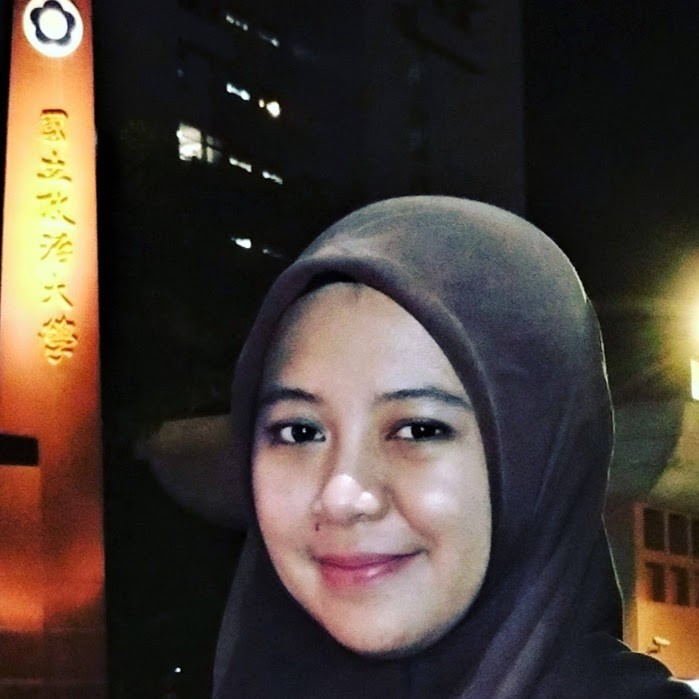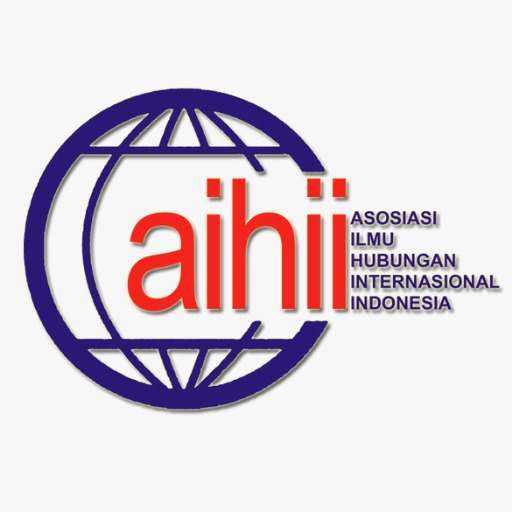Maskulinitas dan Pandemi COVID-19: Studi Kasus Pakistan
Downloads
of COVID-19 dominating globally (data are taken per 24 June 2020).
Depart from the hegemonic masculinity concept, the argument proposed
in this writing is that traditional gender role which positioned men as
breadwinner is one of the vital factors to the high infection among men.
Men who are supposed to work outside their house is arguably more
vulnerable to the virus. The argument is extracted from both Pakistan
experience against COVID-19. According to UN Women, this country of
top the list of countries who has the highest disparity among male and
female patient, reaching more than 70 percent of male and 30 percent for
the female. The statistic goes hand in hand with the notion of traditional
gender roles rooted deep within the community.
Buku atau Bagian dalam Buku
Aslam, Maleeha, 2012. Gender Based Explosions: The Nexus
Between Muslim Masculinities, Jihadist Islamism and
Terrorism. New York: United Nations University Press.
Basow, S., A., 1992. Gender Stereotypes and Roles (3rd ed.).
Belmont, CA: Thomson Brooks.
Flood, Michael, 2005. Men As Victims Of Violence. International
Encyclopedia of Men.
Gordon, A., A., 1996. Transforming Capitalism and Patriarchy:
Gender and Development in Africa. London: Lynne Rienner
Publishers.
Hussain, et al., 2015. Gender Stereotyping in Family: An
Institutionalized and Normative Mechanism in Pakhtun
Society of Pakistan. Sage Publication.
Monshipouri, Mahmood dan Samuel, Amjad, 1995. Development
and Democracy in Pakistan. University of California.
Sadzali, Munawir, 1993. Islam dan Tata Negara Ajaran dan
Pemikiran. Jakarta: Universitas Indonesia Press. Pp 228.
Siddiqi, Dina, 2014. A Note on Gender and Militarism in South Asia;
Gender and Militarism Analyzing the Links to Strategize for
Peace. Women Peacemakers Program
Swatay, A., Z., 2012. Analysis of the Pressures of Masculinity: The
Case of Pakhtun Men/Boys in district Swat. South Asian
Network to Address Masculinity, Swat.
Zaman, RM., Stewart, SM., dan Zaman, TR., 2006. Pakistan:
Culture, Community, and Fami lial Obligations In a Muslim
society. In: Georgas J, Berry JW, De Vijver FRV, Kagitcibasi
C, Poortinga YH, eds. Families a Cross Cultures: a 30 Nation
Psychological Study. Cambridge, UK: Cambridge University
Press. Pp. 42734.
Zaidi, Akbar, S.. 2008. The Political Economy of Military Rule in
Pakistan: The Musharraf Regime. Working Paper No.31.
Institute of South Asian Studies, National University of
Maskulinitas dan Pandemi COVID-19: Studi Kasus Pakistan
Singapore. Pp 18.
Artikel Jurnal
Ahmed, Ishfaq et al., 2017. Occupational Health and Safety Issues
in The Informal Economic Segment of Pakistan: A Survey of
Construction Sites. International Journal of Occupational
Safety and Ergonomics. ISSN: 1080-3548. Taylor and
Francis Group.
Aslam, Maleeha, 2014. Islamism and Masculinity: Case Study
Pakistan. HSR Vol. 39.
Bhanbhro, Sadiq, et al, 2013. "Karo Kari-The Murder of Honour
in Sindh Pakistan: An Ethno graphic Study”. International
Journal of Asian Social Science. 3(7):1467-1484
Faridi, Z., Muhammad & Chaudhry, S., Imran, 2009. An Analysis
of the Determinants of Male Labor Force Participation and
Employment Status in Pakistan: The Case of Bahawalpur
District”. Pakistan Journal of Social Sciences (PJSS). 29 (2):
-208.
Hasnain, et al., 2012. Young Adults' Perceptions on Life Prospects
and Gender Roles as Important Factors to Influence Health
Behaviour: A Qualitative Study from Karachi, Pakistan.
Global Journal of Health Science. 4(3).
Iqbal, Hamid et al., 2012. Gender Discrimination: Implications for
Pakistan Security. IOSR Journal of Humanities and Social
Science. ISSN: 2279-0845. 1(4): 16-25.
Javaid, U., Omer, S., dan Jabeen, S., 2012. Rife manifestation
of gender segregation in Indian society: Evidence from
textbooks. Journal of South Asian Studies, 27: 21-34
Khattak, S, See., 1995. Militarization, Masculinity and Identity in
Pakistan: Effects on Women. in N.S. Khan & A. Sherbano
(Eds.). Unveiling the Issues. Lahore: Asr Publications. (1):
-64.
Nasrullah, Muazzam dan Bhatti, A., Junaid, 2012. Gender
Inequalities and Poor Health Outcomes in Pakistan: A Need of Priority for the National Health Research Agenda.
Journal of the College of Physicians and Surgeons Pakistan.
(5): 273-274.
Qasim, Z., M., 1998. Sectarianism in Pakistan: The Radicalization
of Shi'i and Sunni Identities. Modern Asian Studies, 32(3):
–716.
Sama, E., Iziah, et al., 2020. Circulating Plasma Concentrations
of Angiotensin-Converting Enzyme 2 in Men and Women
with Heart Failure and Effects of Renin-Angiotensin–
Aldosterone Inhibitors. European Heart Journal. 41(19).
Salway S, Jesmin S dan Rahman S, 2005. Women's employment
in urban Bangladesh: A challenge to gender identity?.
Development and Change. 36(2):317-349.
Instrumen Legal
UNESCO Islamabad, 2010. Guidelines for Mainstreaming Gender
in Literacy Materials. ISBN 978-969-8035-10-5 (Print
version) ISBN 978-969-8035-11-2 (Electronic version).
USAID, 2016. Masculinity in Pakistan A Formative Research Study.
United States Government, Aurat Foundation.
Laporan Penelitian
Khasanah, Uswatun , 2014. Biografi Benazir Bhutto di Pakistan
(Kajian Terhadap Karir Politik Tahun (1984-2007). Skripsi
Jurusan Sejarah dan Kebudayaan Islam Fakultas Adab dan
Ilmu Budaya Universitas Islam Negeri Sunan Kalijaga.
Publikasi Daring
Amal, A., Taufik, 2001. Pelajaran Berharga dari Pakistan. Dalam
Islam Liberal Com. [daring]. Tersedia dalam http// Islamlib.
com/ id/ artikel/ pelajaran berharga dari Pakistan. [Diakses
Juli 2020].
Maskulinitas dan Pandemi COVID-19: Studi Kasus Pakistan
Jurnal Hubungan Internasional â–¡ Tahun XIII, No. 2, Juli - Desember 2020
Chaudhry, Naghman, 2012. Pakistan's First Military Coup: Why
Did The First Pakistani Coup Occur And Why Does It
Matter?. Tesis, Monterei, California: Naval Postgraduate
School Hal.60. [daring]. Tersedia dalam http://calhoun.
nps.edu/bitstream/handle/10945/6773/12Mar_Chaudhry.
pdf?sequence=1&isAllowed=y. [Diakases pada 10 Juli 2020].
Global Health 50/50, 2020. Sex, Gender and COVID-19. [daring].
Tersedia dalam https://globalhealth5050.org/covid19/mensex-
gender-and-covid-19/. [Diakses 10 Juli 2020].
Guan, W. et al., 2020. Clinical Characteristics of Coronavirus
Disease 2019 in China. New England Journal of Medicine.
hal. NEJMoa2002032. [daring]. Tersedia dalam http://
dx.doi.org/ 10.1056/NEJMoa2002032 [Diakses 10 Juli
.
Goverment of Pakistan, 2020. Pakistan Cases Details. [daring].
Tersedia dalam http://covid.gov.pk/stats/pakistan. [Diakses
Juli 2020].
Labour Force Survey 2017-18. Pakistan Economic Survey 2018-
; Population, Labour Force and Employment. [daring]
Tersedia dalam https://www.google.com/url?sa=t&sour
ce=web&rct=j&url=http://www.finance.gov.pk/survey/
chapters_19/12Population.pdf&ved=2ahUKEwiux4aHm9X
qAhX36nMBHaQKCvkQFjADeg QIAxA J&usg=AOvVaw1m_
gSny1jxraVulyNxx&cshid=1595020684099. [Diakses 17 Juli
.
Pakistan Bureau of Statistics, Government of Pakistan, 2018.
Pakistan Employment Trend 2018. [daring] Tersedia dalam
http://www.pbs.gov.pk. [Diakses 10 Juli 2020].
Reuters, 2020. Men Have High Levels of Enzyme Key to COVID-19
Infection, Study Finds. [daring]. Tersedia dalam https://
www.reuters.com/article/us-health-coronavirus-Ace2men/
men-have-high-levels-of-enzyme-key-to-covid-19-infectionstudy-
findsidUSKBN22M0UA. [Diakses 17 Juli 2020].
Rozan, ICRW, Partners for Prevention, 2010. Understanding
Masculinities: A Formative Research on Masculinities
and Gender based Violence in Peri-urban area in
Rawalpindi Pakistan. [daring]. Tersedia dalam www.
partners4prevention.org. [Diakses 10 Juli 2020]
Dias Pabyantara S.M. dan Anggi Koenjaini Putri
Plecher, H., 2020. Employment by economic sector in Pakistan
[daring]. Tersedia dalam https://www.statista.com/
statistics/383781/employment-by-economic-sector-inpakistan/.
[Diakses 17 Juli 2020].
WHO, 2020. Dasbor WHO Coronavirus Disease (COVID-19).
[daring]. Tersedia dalam https://covid19.who.int/. [Diakses
Juli 2020].
UN OCHA, 2020. Pakistan Humanitarian Response Plan For
COVID-19 Pandemic 2020. [daring]. Tersedia dalam http://
www.unocha.org/. [Diakses 10 Juli 2020].
UN Women, 2020. COVID-19: Emerging Gender Data and Why It
Matters. [daring]. Tersedia dalam https://data.unwomen.
org/resources/covid-19-emerging-gender-data-and-why-itmatters.
[Diakses 10 Juli 2020].
________, 2020. Gender and COVID-19; Surveys Show That
COVID-19 Has Gendered Effects in Asia and The Pacific.
[daring]. Tersedia dalam https://data.unwomen.org/
resources/surveys-show-covid-19-has-gendered-effectsasia-
and-pacific. [Diakses 10 Juli 2020].
Wenham, C., J. Smith dan R. Morgan, 2020. COVID-19: the
Gendered Impacts of the Outbreak. Lancet Publishing
Group. [daring]. Tersedia dalam http://dx.doi.org/10.1016 /
S01406736(20)30526-2. [Diakses 10 Juli 2020].
- Authors retain the copyright of their article without restrictions and grant the journal right of first publication with the work simultaneously licensed under a Creative Commons Attribution License that allows others to share the work with an acknowledgment of the work's authorship and initial publication in this journal
- Authors are able to enter into separate, additional contractual arrangements for the non-exclusive distribution of the journal's published version of the work, with the condition that it is not intended for commercial purposes, and cite an acknowledgment of its initial publication in this journal.
- Authors are permitted and encouraged to post their work online (e.g., in institutional repositories or on their website) prior to and during the submission process, as it can lead to productive exchanges, as well as earlier and greater citation of published work (See The Effect of Open Access). However, authors are not allowed to share their work with other journals or publishers as it may lead to conflicting publication processes.

This work is licensed under a Creative Commons Attribution-NonCommercial-ShareAlike 4.0 International License.














